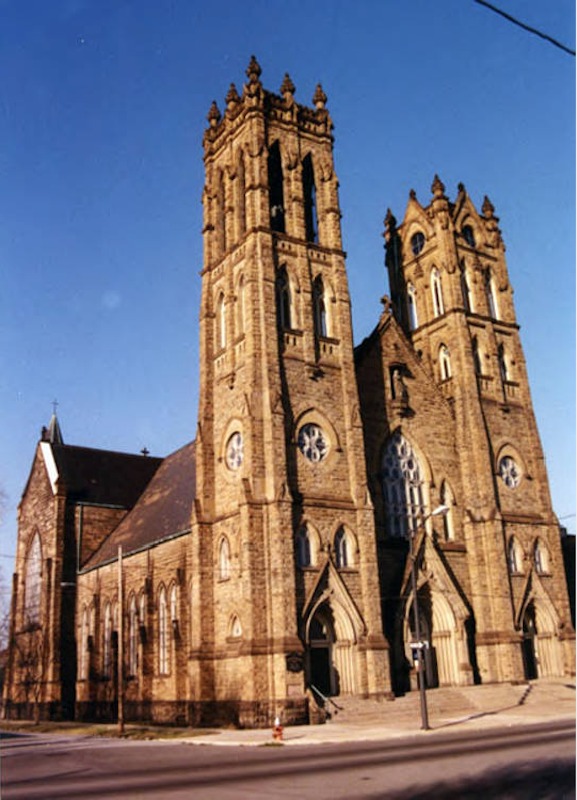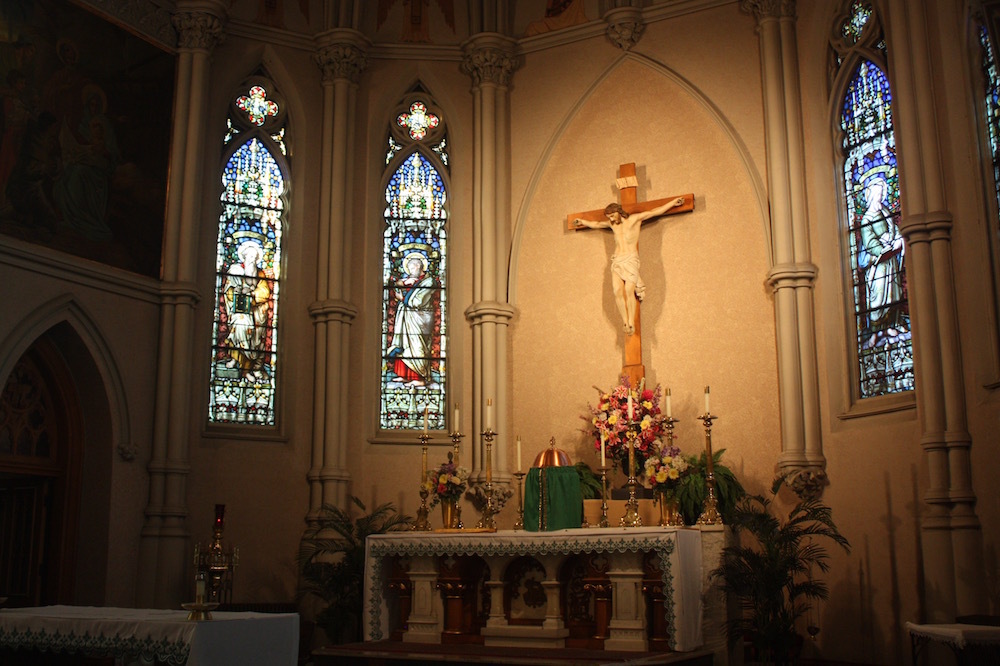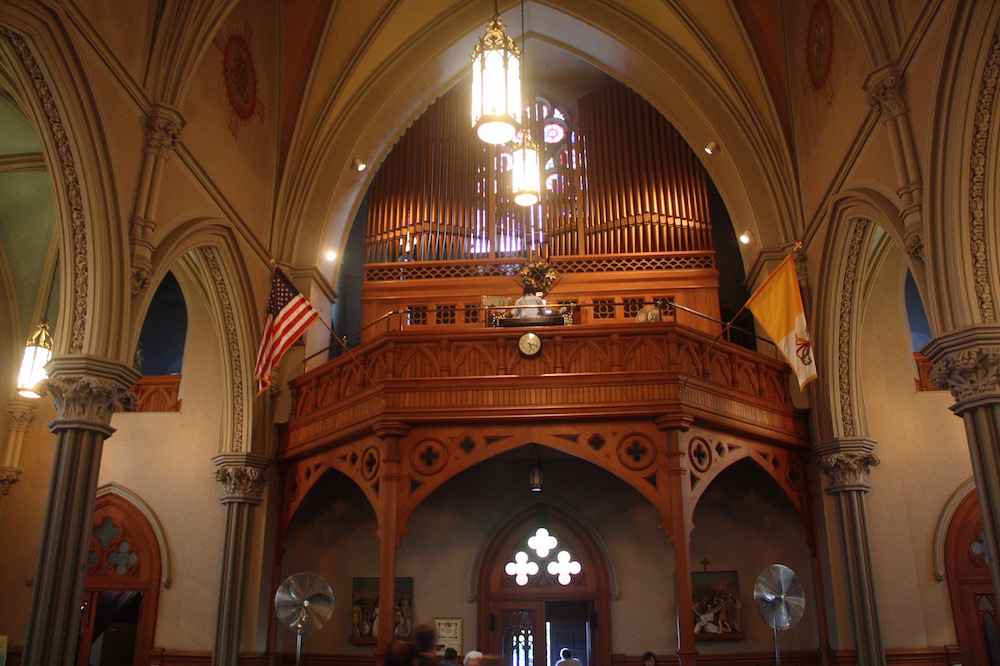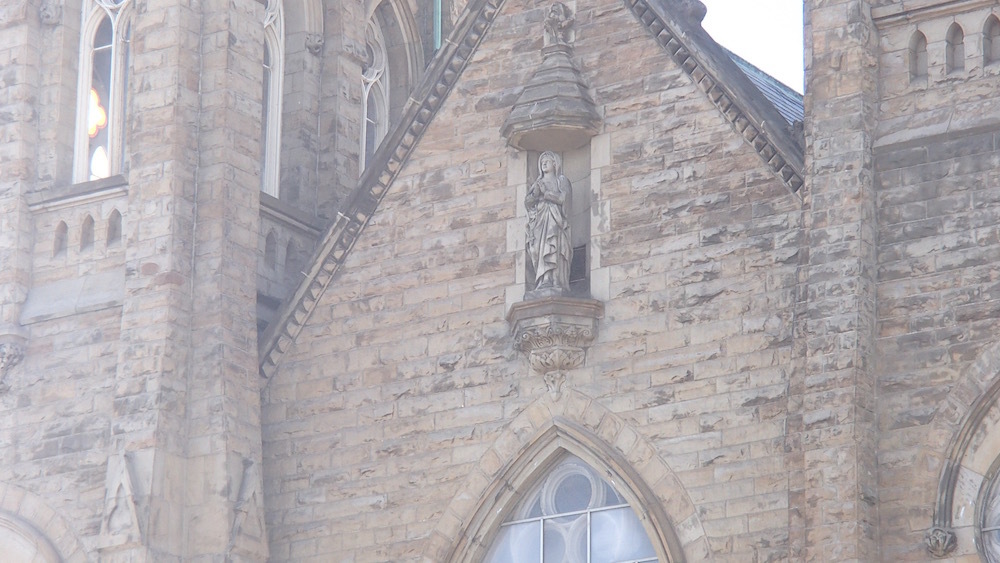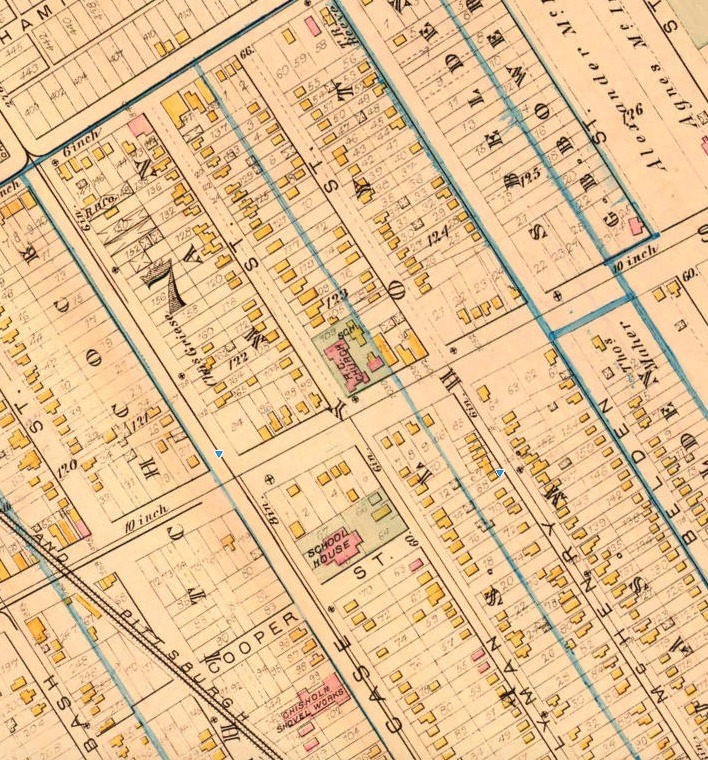
As the city's near east side neighborhoods expanded rapidly in the mid 19th century, new churches developed and flourished to serve several ethnic communities. Twentieth century growth and population transitions redefined parish roles and practices.
The mid-1800s were a busy time for the near east side Catholic residents of Cleveland along the Superior Avenue corridor. The Cathedral of St. John the Evangelist was dedicated upon completion in 1852 and also housed a school on its grounds. Within a year, Father John Luhr founded Saint Peter parish just nine blocks east on Superior Avenue for Cleveland's German congregation and completed construction of a church and school within two years. The demand was not finished. Further out Superior, the spiritual needs of the Irish residents required the attention of the Bishop. In 1855, Bishop Rappe chartered a mission at Superior and Lyman (East 41st) Streets to become the Church of the Immaculate Conception. The first structure of the mission was the Church of the Nativity which originally stood at the site of the Cathedral of St. John. It served as the mission church and school for a decade. Another frame building was built to serve the parishioners for the next decade until the present church structure was completed.
During the growth of the mission into the parish (1856 - 1870), the congregation fluctuated in size and support under two pastors, delaying the development and construction of its permanent home. An energetic pastor, Fr. Thomas Thorpe, mounted the effort to see the construction through and on August 17, 1873, the cornerstone of the Church of the Immaculate Conception was laid with nearly 10,000 city residents looking on. By its dedication in 1878, the early English Gothic designed church structure of Berea sandstone measured 169 by 91 feet. Two "well proportioned spires, the highest of which will be two hundred and seventy-five feet" grace the front of the church with another smaller spire at its rear. Fr. Thorpe enjoyed the support of both his parishioners and many non-parishioner neighborhood residents. Bishop Gilmour reflected upon that support in his comments during the ceremony marking "progress in the world both in intelligence and in virtue."
Rapid population growth during the next 20 years saw the development of new neighboring parishes that emerged east and south of Superior Avenue: St. Aloysius in Glenville, St. Agnes and St. Agatha on Euclid Avenue, St. Columbkille on Superior Avenue. While its school continued to thrive, Immaculate Conception hosted temperance societies, a band, and was the center of many Irish festivities and celebrations every year including the central gathering place for St. Patrick's Day parade festivities. The parish maintained its prominence in the community through the second world war, however, the postwar suburban growth and urban transition brought reduced numbers of parishioners and school enrollees. Over the past few decades, Immaculate Conception has maintained a multiethnic parish and school, while serving the whole Cleveland community with the celebration of the Tridentine Latin masses.
Images


